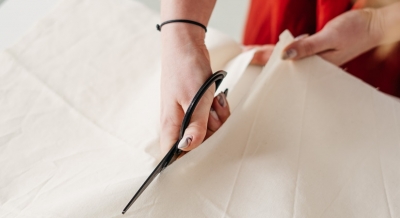Moving closer to sustainability
BILKULONLINE
Nowadays, more brands are stepping forward to incorporate sustainable clothing and they are creating it by giving it a stylish twist based on ongoing fashion trends.
For instance, most fast-fashion retailers are looking at ways to cut down their carbon footprints and are working towards a sustainable future.
The manufacturing process is witnessing a transformation and opting for a more sustainable approach to making clothes. Fashion retailers and apparel manufacturers are opting for nature-based fabrics. Chemical usage in processing and dyeing fabrics has been reduced considerably. Fabrics that are made with closed-loop processes help in conservation and ensure the optimum use of resources. Industries are incorporating modern technology that enables them to reduce water consumption.
Sustainable fashion in modern times is considered by looking at every stage in the supply chain: design, material procurement, processing and production, transportation, distribution, end of life, and understanding of companies’ initiatives. The business model is assessed based on the impact on nature — how intense the water usage, pollution and carbon emissions are during processing; ensuring proper waste management at the pre/post-consumer stage, are all important aspects.
Here are four factors that need to be addressed in the fashion industry in order to move closer to sustainability.
. Using more sustainable materials
. Minimising the carbon footprint of the industry and improving resource efficiency
. Reducing waste
. And, perhaps the least talked about, making the industry transparent and easy to understand for the consumer
For instance, Liva, a natural fluid fabric, is ethically derived from natural, renewable resources and manufactured through a stringent eco-friendly processes that can be traced to its origin, contributing towards a greener environment. Fibers sourced from certified sustainable forests help enhance the fluidity and softness of the fabric. These fabrics save landfills by 6-7 times more than cotton and consume 3-4 times lesser water.
Initiatives by the industry toward sustainability
The first step for many companies is to implement recycling programs. The increasing environmental pressure has been building over a period of time on our ecosystem warranting re-consideration of our economic paradigm. This urges commercial industries around the world to increase the efficiency of natural resource use and reduce the overall environmental impact.
Manufacturing units are making use of solar energy which is very beneficial in the conservation of depletable resources. Fashion brands too are becoming environmentally responsible by leveraging technology, automating production, and making packaging more sustainable. Utilization of bacteria-based dyes, deploying a blockchain-based supply chain, and introducing traceability to increase transparency are some new-age solutions to better achieve the cause of sustainability.
Marketing the sustainable factor to the target audience
The consumer base is pretty mixed. A typical consumer is not uniform in their purchasing behaviour. They tend to buy both fast-fashion and clothes that have a sustainable approach. Consumer sentiment versus actual purchasing behaviour is a really interesting point of discussion. We know Millennials and Gen-Zs tend to prefer more sustainable fashion as it has seen exponential growth over the years. The fact that most sales occurred online benefited tailwinds for the sector-value, variety, and sustainability.
Wave of innovation
The evolution of digital traceability and how it can increase transparency in the supply chain has become a reliable option. This technology could also enable brands to trace their supply chains from raw materials to finished goods and monitor suppliers for compliance. Companies can thus strategically target potential risks in their supply chains.
Some firms are also working on unique digital passports that are tied to a specific garment. This might be a QR code or RFID that presents to both consumers and companies where something was manufactured, what the materials are, how many times it’s been owned by someone, and end-of-life information such as the most effective recycling practice. We’re in the first innings; this digital infrastructure will take an incredible amount of investment and time. Also, digital printing tech emergence has enabled designers to take their ideas from concept to garment in a much faster time frame and opened new avenues of creativity.
(Gaurav Agarwal is a Deputy General Manager of Central Sustainability CellBirla Cellulose)



